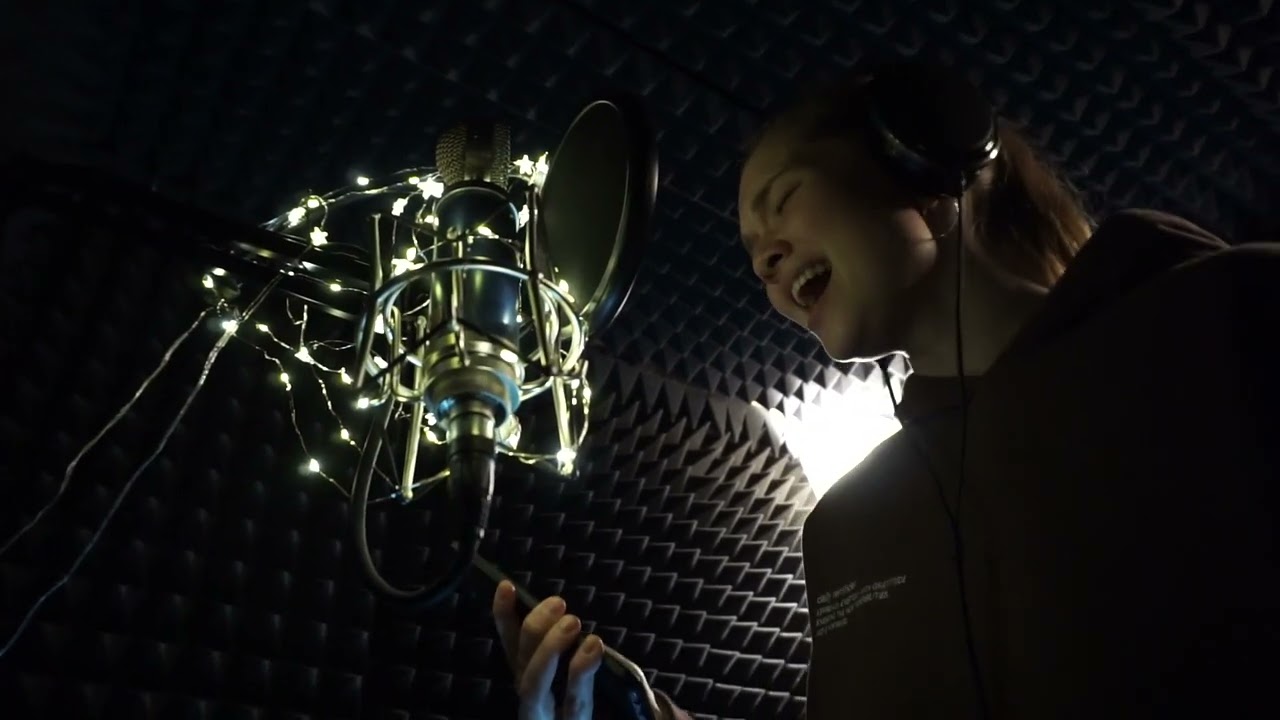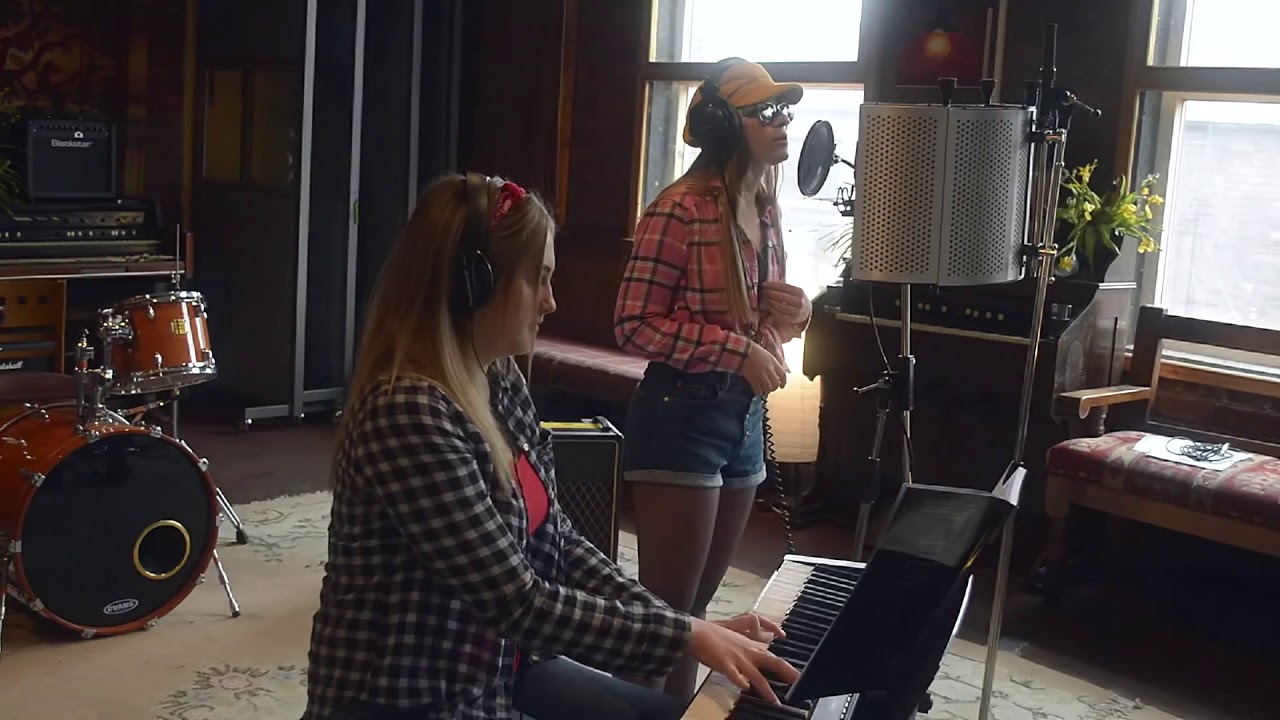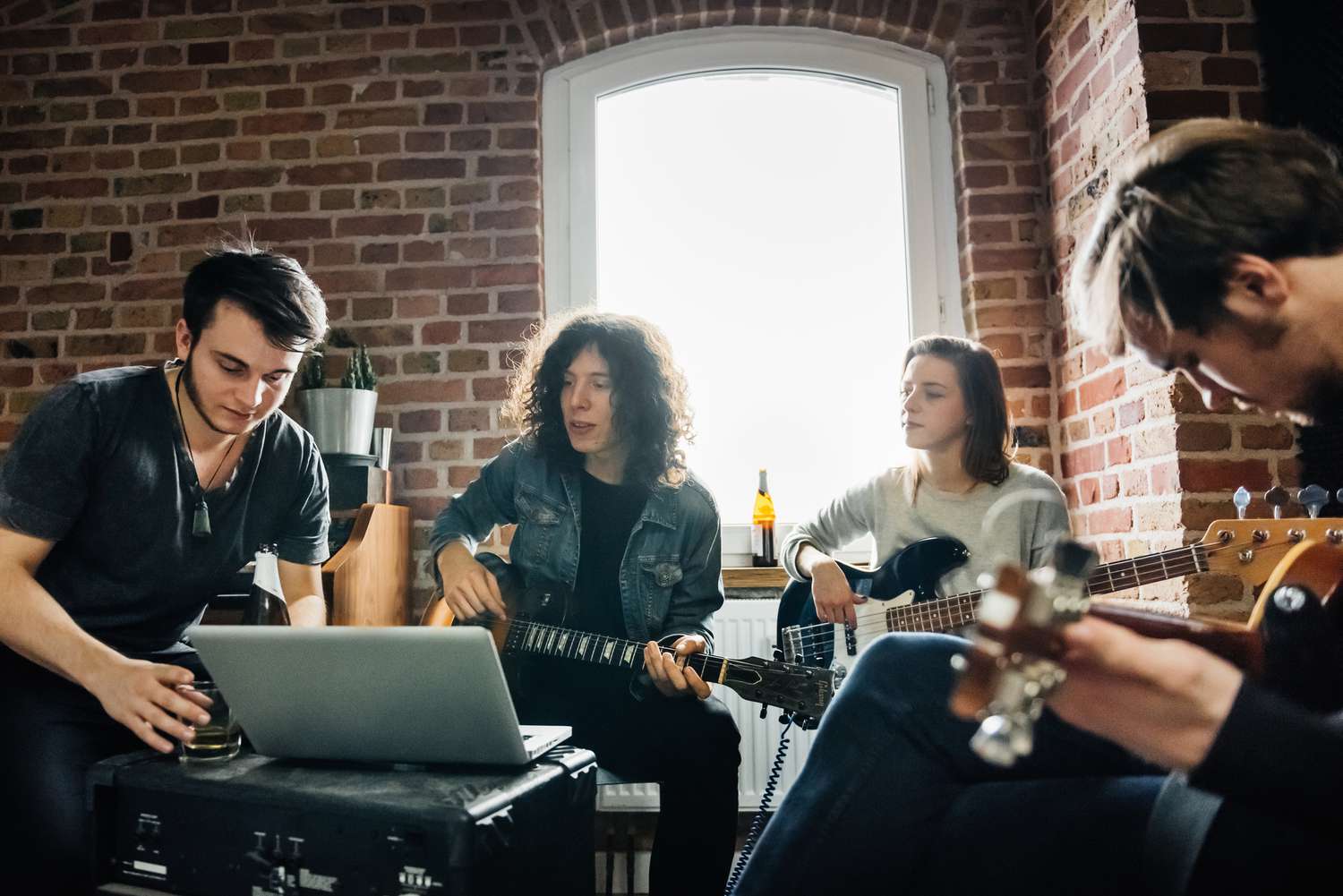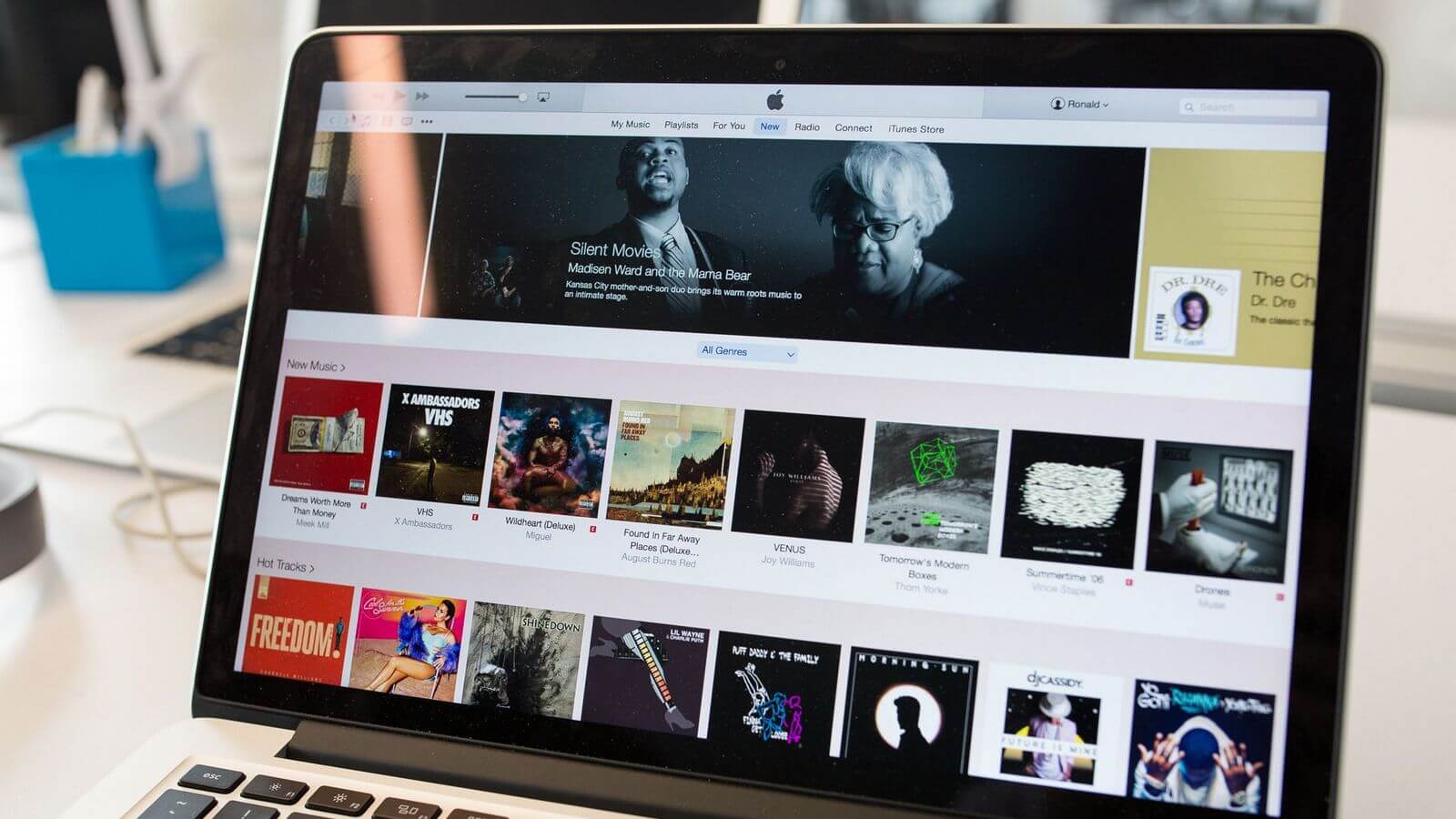Home>Production & Technology>Cover Song>What Is A Cover Song?


Cover Song
What Is A Cover Song?
Modified: January 22, 2024
Discover the meaning of a cover song and how artists reinterpret popular tunes in their unique style. Explore the world of cover songs and their impact on music culture.
(Many of the links in this article redirect to a specific reviewed product. Your purchase of these products through affiliate links helps to generate commission for AudioLover.com, at no extra cost. Learn more)
Table of Contents
Introduction
Music has the power to evoke emotions, unite communities, and transcend time. Throughout history, musicians have paid homage to their inspirations by creating cover songs. These reinterpretations of popular songs serve as a form of artistic expression and allow artists to put their unique spin on familiar melodies.
A cover song, simply put, is a new rendition or recording of a previously released song. It involves an artist or group performing a song that was originally written and recorded by another artist. Cover songs can range from faithful replicas to completely reimagined versions, showcasing the creativity and individuality of the covering artist.
The practice of covering songs has a long and rich history. Even before the advent of recorded music, musicians would often perform their own interpretations of popular tunes. This tradition of reinterpreting existing songs has been passed down through generations, evolving with the changing landscape of music.
Cover songs serve various purposes and hold different meanings for both the artists who perform them and the audience who listens to them. For some artists, covering a song is a way to pay homage to their musical influences or showcase their versatility by tackling different genres. It can also be a strategic move to gain exposure and connect with a broader audience.
The impact of cover songs on the music industry cannot be underestimated. They have the ability to reignite interest in older songs, introduce younger audiences to classic hits, and bring attention to emerging talents. Cover songs often find success on platforms like YouTube, where artists can showcase their creativity through visually engaging performances.
Cover songs, however, do bring up copyright concerns. Artists must obtain the necessary licenses and permissions to release a cover song legally. They need to navigate the complex world of copyright law, as well as negotiate with original songwriters and publishers.
In this article, we will delve deeper into the world of cover songs. We will explore the historical background, the reasons behind creating cover songs, popular cover song examples, the impact of cover songs on the music industry, and the copyright concerns associated with covering songs.
So, let’s dive in and discover the fascinating world of cover songs!
Definition of a Cover Song
A cover song is a musical composition, typically a popular or well-known song, that is performed or recorded by an artist or group other than the original creator or performer. In simple terms, it is a new version of an existing song.
When an artist decides to cover a song, they may choose to stay faithful to the original arrangement, replicating the instrumentation, vocal style, and overall structure. This type of cover song is often referred to as a “straight cover” or “exact cover.” It aims to recreate the original song as closely as possible, paying homage to the original artist’s rendition.
On the other hand, an artist may opt for a more creative approach, reinventing the song by adding their own musical elements, altering the tempo, changing the genre, or even rearranging the entire composition. These types of cover songs are commonly known as “reimagined covers” or “reinterpretations.” They allow the covering artist to put their individual stamp on the song, infusing it with their unique style and artistic vision.
It’s important to note that covers can take many forms beyond just musical reproductions. They can also extend to different mediums such as visual arts, where artists reinterpret and reimagine iconic album covers or create visual representations of popular songs.
Cover songs can be performed and recorded by musicians of all levels, from aspiring artists sharing their talent on social media platforms to established acts releasing cover versions on albums or as singles.
In summary, a cover song is a rendition or recording of a previously released song by an artist or group other than the original creator. Whether it stays faithful to the original or takes a unique interpretation, a cover song provides artists with a platform to showcase their skills, pay tribute to their influences, and connect with audiences through familiar melodies.
Historical Background
The practice of covering songs has a long and storied history that can be traced back centuries. Before the advent of recorded music, musicians often learned songs through oral tradition and would perform their own interpretations of popular tunes. This tradition of reinterpreting existing songs allowed musicians to add their personal touch to familiar melodies and connect with their audience on a deeper level.
In the early 20th century, as recording technology advanced and the music industry began to take shape, cover songs became a way for artists to capitalize on the success of popular hits. Many record labels would release multiple versions of the same song, performed by different artists, in an attempt to reach a wider audience. This practice was particularly prominent in genres such as jazz, blues, and early rock and roll.
During the 1950s and 1960s, the rise of rock and roll and the emergence of artists like Elvis Presley and The Beatles led to a significant increase in the popularity of cover songs. Artists would often rework or put their own spin on songs written and performed by others, creating a sense of competition and artistic exploration within the music industry.
In the 1980s and 1990s, cover songs experienced a resurgence in popularity. With the advent of MTV and the rise of music videos, artists began to see covers as a way to grab attention and breathe new life into familiar tunes. This era saw covers reaching new heights of chart success, with artists such as Whitney Houston and Sinéad O’Connor achieving massive hits with their reinterpretations of classic songs.
In recent years, with the widespread availability of digital platforms and social media, covering songs has become more accessible than ever. Artists can easily share their versions of popular songs on platforms like YouTube, reaching millions of viewers and gaining exposure in ways that were previously unimaginable.
Overall, the historical background of cover songs showcases a continuous tradition of reinterpreting and reinventing existing music. It reflects the ever-changing landscape of the music industry and the creative spirit of artists who seek to connect with audiences through familiar melodies while adding their unique flair.
Reasons for Creating Cover Songs
Artists have various motivations for creating cover songs, ranging from personal expression to strategic career moves. Let’s explore some of the common reasons why artists choose to cover existing songs.
- Paying homage to musical influences: Covering songs allows artists to pay tribute to the musicians who have inspired them. It’s a way for artists to honor the songs and artists who have shaped their musical journey. By performing a cover, artists can showcase their appreciation for the original creator’s work and demonstrate the influence it had on their own style.
- Displaying versatility: Cover songs present an opportunity for artists to demonstrate their versatility and range. They can delve into different musical genres and styles, showcasing their ability to interpret and perform songs outside their typical repertoire. This helps artists connect with a wider audience and expand their fan base.
- Reinterpreting and adding personal touch: Artists often interpret cover songs in their unique style, bringing their own artistic vision and musicality to the table. By adding their personal touch to a familiar song, artists can breathe new life into it, infusing it with their emotions and experiences.
- Connecting with the audience: Cover songs provide artists with an avenue to connect with their audience through familiar melodies. Sharing a beloved song creates an instant connection with listeners, evoking nostalgia and a sense of familiarity. It allows artists to forge a bond with their audience by creating a shared musical experience.
- Grabbing attention and gaining exposure: For emerging artists, covering well-known songs can be a strategic move to gain attention and exposure. A recognizable song can capture the interest of listeners and provide a platform for artists to showcase their talent. They can use cover songs as a stepping stone to introduce their original music to a wider audience.
Cover songs serve as a testament to the enduring power of certain compositions. They allow artists to put their own spin on beloved tunes, creating new interpretations that resonate with audiences. Whether it’s to pay homage, display versatility, or connect with listeners, cover songs provide artists with a means to explore and express their musical identity while honoring the legacy of the songs that came before.
Popular Cover Songs
Over the years, there have been countless cover songs that have captivated audiences and achieved great success. These songs have become iconic in their own right, showcasing the power of reinterpretation and the ability to breathe new life into familiar melodies. Here are some examples of popular cover songs that have made a significant impact:
- “Hallelujah” – Jeff Buckley: Originally written and performed by Leonard Cohen, “Hallelujah” gained immense popularity when Jeff Buckley recorded his haunting rendition in 1994. Buckley’s emotionally charged vocals and unique interpretation turned the song into a timeless classic.
- “I Will Always Love You” – Whitney Houston: Originally written and performed by country artist Dolly Parton, Whitney Houston’s powerhouse rendition of “I Will Always Love You” for the movie “The Bodyguard” became one of the best-selling singles of all time. Houston’s emotive delivery and vocal prowess catapulted the song to international fame.
- “All Along the Watchtower” – Jimi Hendrix: Originally written and performed by Bob Dylan, Jimi Hendrix’s guitar-driven cover of “All Along the Watchtower” is hailed as one of the greatest cover songs in rock history. Hendrix’s electrifying version transformed the song into a psychedelic rock masterpiece.
- “Imagine” – A Perfect Circle: A Perfect Circle’s haunting cover of John Lennon’s “Imagine” introduced a fresh take on a song that has long been considered a timeless anthem for peace. The band’s alternative rock sound added a new layer of intensity to the iconic composition.
- “Tainted Love” – Soft Cell: Originally recorded by Gloria Jones, Soft Cell’s synth-pop cover of “Tainted Love” became a global hit in the early 1980s. The band’s edgy and danceable version turned the song into a new wave classic.
The above examples represent just a fraction of the countless cover songs that have resonated with audiences over the years. Each cover brings its unique interpretation and adds a fresh perspective to the original composition, allowing listeners to experience a familiar song in a whole new light.
It is the power of these popular cover songs that highlights the creative potential of reinterpretation and showcases the enduring appeal of well-crafted music.
Impact of Cover Songs on the Music Industry
Cover songs have had a significant impact on the music industry, influencing artists, propelling careers, and shaping the way audiences engage with music. Here are some key ways in which cover songs have made their mark:
- Reviving interest in older songs: Cover songs have the power to reintroduce older songs to a new generation of listeners. When a contemporary artist covers a classic hit, it can reignite interest in the original version, prompting listeners to explore the back catalog of the original artist.
- Introducing younger audiences to classic hits: Cover songs can bridge the generational gap by introducing younger audiences to older, iconic songs that they may not have discovered otherwise. This exposure to popular classics helps create a deeper appreciation for music history and connects generations through shared musical experiences.
- Bringing attention to emerging talent: For up-and-coming artists, covering popular songs can be a strategic move to gain exposure and capture the attention of a wider audience. A well-executed cover can serve as a springboard for establishing an artist’s own unique sound and earning recognition within the music industry.
- Generating viral sensations on social media: In the digital age, cover songs have the potential to become viral sensations on social media platforms. Artists who showcase their cover performances on platforms such as YouTube or TikTok can quickly gain widespread attention, building a dedicated fan base and career opportunities.
- Providing a platform for artistic reinterpretation: Cover songs allow artists to reinterpret existing material and put their own artistic stamp on a familiar melody. This creative freedom can result in fresh interpretations that inspire other musicians and push the boundaries of musical expression.
Cover songs have become a staple in the music industry, offering a unique way for artists to pay homage to their musical influences, connect with audiences, and showcase their individuality. They have proven to be an effective tool for capturing attention, creating viral moments, and establishing artists as distinct voices within the industry.
Moreover, cover songs demonstrate the timeless nature of great compositions. They highlight the enduring appeal of certain melodies and lyrics, and how they can be reimagined to resonate with new listeners and continue to inspire and captivate audiences for years to come.
Copyright Concerns with Cover Songs
When it comes to cover songs, there are important copyright considerations that artists must navigate to ensure that their renditions are released legally. Here are some key copyright concerns associated with cover songs:
- Obtaining licenses and permissions: To release a cover song legally, artists need to obtain the necessary licenses and permissions from the original creators or copyright holders. This involves securing mechanical licenses, which grant permission to reproduce and distribute the song, as well as synchronization licenses if the cover will be used in a visual medium such as a music video. Failure to obtain the proper licenses can result in legal consequences and financial penalties.
- Paying royalties: Artists who release cover songs must pay royalties to the original songwriters and publishers. Royalty rates are typically set by copyright organizations or licensing agencies and are based on factors such as the duration of the cover, the number of units sold or streamed, and the market in which it is released. These royalties are essential for compensating the original creators for their work and ensuring that they receive fair compensation for their intellectual property.
- Complying with copyright restrictions: Artists must ensure that their cover songs adhere to copyright restrictions set by the original creators. This includes faithfully replicating the composition and arrangement of the original song or obtaining permission if they plan on making significant changes to the lyrics or melody. It is important to respect the integrity of the original work and avoid infringing upon the rights of the original artist.
- Properly crediting the original creator: Artists are required to give proper credit to the original creators of the covered song. This includes listing the original songwriter(s) and composer(s) in the credits and ensuring that they receive acknowledgment for their work. Proper crediting not only establishes transparency and respect for copyright ownership, but it also allows listeners to discover and appreciate the original version of the song.
- Clearing samples: Some cover songs may include samples or elements from other copyrighted works. Artists must obtain appropriate clearances for these samples to avoid copyright infringement. This involves contacting the copyright holders of the sampled material and securing the necessary permissions or licenses. Failure to clear samples can result in legal disputes and the removal of the cover song from distribution platforms.
It is crucial for artists to consult with legal professionals or use reputable licensing agencies to navigate the complex landscape of copyright when releasing cover songs. By ensuring compliance with copyright laws and obtaining the necessary licenses and permissions, artists can release their cover versions with peace of mind, knowing that they are respecting the rights of the original creators and protecting their own artistic endeavors.
Conclusion
Cover songs have undeniably left a lasting impact on the music industry. From paying homage to musical influences to captivating audiences with fresh interpretations, cover songs provide artists with a creative outlet for expression and connection. These renditions breathe new life into familiar tunes, reintroducing older songs to new generations and introducing younger audiences to classic hits.
Cover songs have the power to evoke emotions, create viral moments, and propel careers. They allow artists to display versatility, gain exposure, and connect with listeners through shared musical experiences. The popularity of cover songs is evident in the countless examples of successful reinterpretations that have resonated with audiences worldwide.
However, it is crucial for artists to navigate the copyright concerns associated with cover songs. Obtaining the necessary licenses and permissions, paying royalties to original creators, and respecting copyright restrictions are essential to release cover songs legally and ethically. By adhering to these copyright considerations, artists can ensure that their covers are authentic and respectful while also giving proper credit to the original creators.
In conclusion, cover songs have become an integral part of the music industry. They bridge generational gaps, showcase artistic reinterpretation, and provide a platform for artists to explore and express their musical identities. Whether it’s paying tribute to musical influences, gaining exposure, or creating viral sensations, cover songs continue to captivate audiences and shape the ever-evolving landscape of music.











